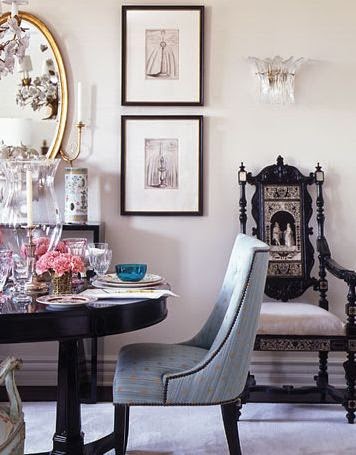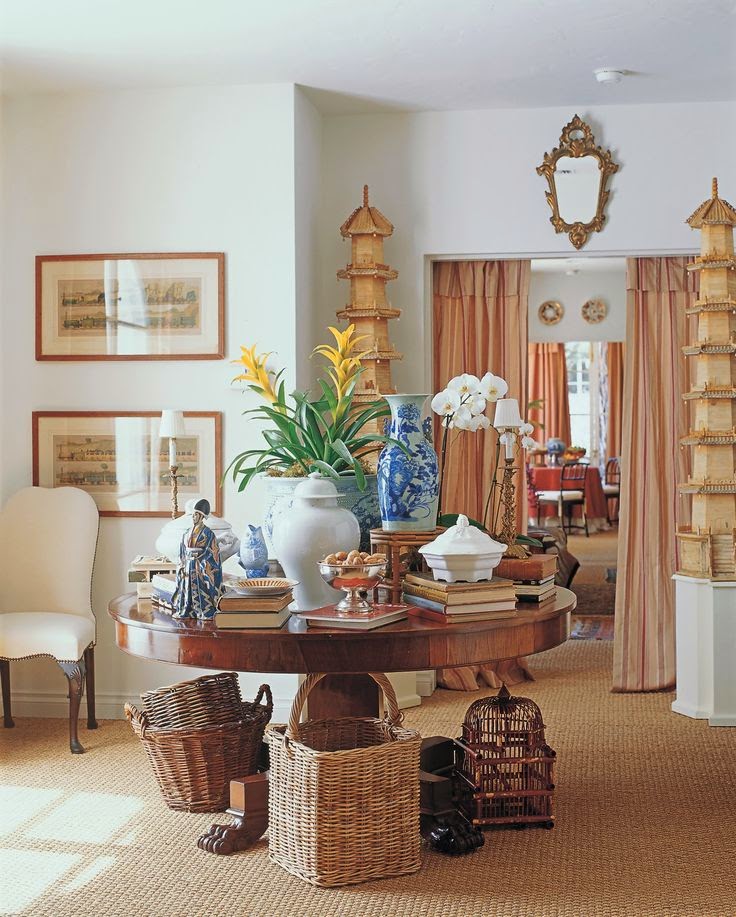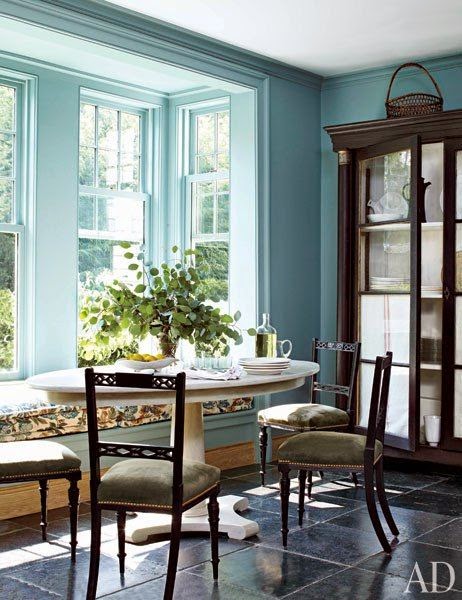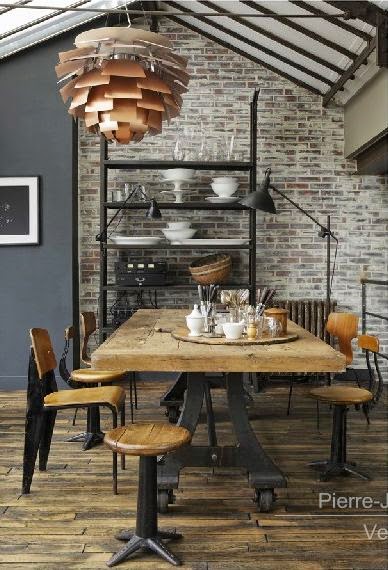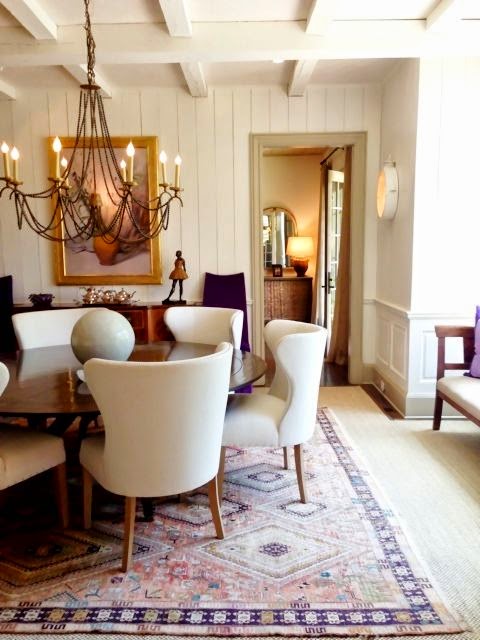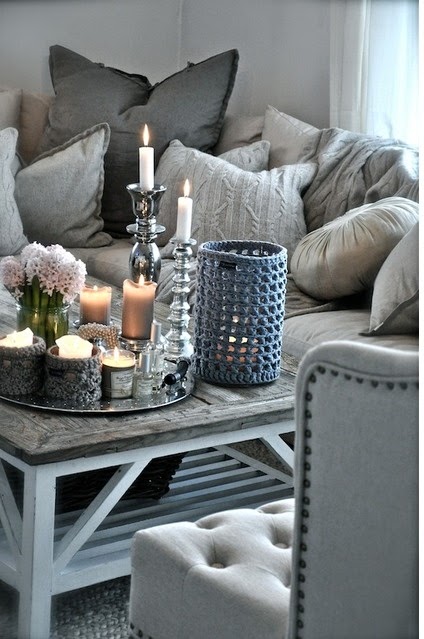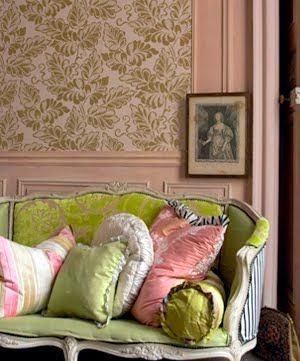Understanding Style: an Elusive Topic Broken Down into Understandable Parts
joy of nesting
KELLY WEARSTLER above
True
style is something that’s classic and timeless. It’s observing that function
comes first but it’s also having the confidence to break a few rules. It’s making
a grand gesture occasionally. It’s playing with scale, line, and balance. It’s
trusting your instincts. And it’s knowing how to combine styles, patterns,
textures and color in appealing ways.
term “style” is defined by businessdictionary.com as “elements combined and
expressed in a particular manner”. Having
style, more than anything, is about putting complimentary elements together in
a way that tells your own story.
understand how style works in the home you first need to understand what works
for you, your architecture, and your geography.
As a good haircut flatters a certain shape of face, the right furnishings
will work with and flatter your home’s overall design. Remember the sixties
television show “Green Acres” with Eddie Albert and Zsa Zsa Gabor? They had a
farmhouse out in the middle of nowhere (Hooterville) filled with “Lisa’s” elaborate
furnishings from her Park Avenue penthouse. It was a decorating faux pas at its
finest, although it seemed to work for Lisa.
Style
as it’s used in architectural terms is classified by a number of things
including historic period, materials, size, roof pitch, as well as other
details like windows and hardware. Many of the newly constructed homes today
are a mix of architectural styles making it almost impossible to clearly
identify them.
MARY MCDONALD above
architectural styles to California are arts and crafts bungalows, sprawling
ranch style homes, ornate Victorian’s, romantic Spanish revivals, seaside
cottages, rustic log cabins, and mid-century modern structures like those you
see in the Hollywood Hills and Palm Springs.
the furniture industry, style is typically split into two categories:
traditional and contemporary. Somewhere along the way we added an additional
category called transitional which loosely means a mix of both. There are many
sub-categories and various influences within the three basic styles such as
Danish Modern, French Moderne, Mid-Century Modern, Swedish style, the various
Louis’, and more. There also offshoots of these styles and I’ll explain them as
well as the power that color has on the overall feel of your interior spaces.
I think of “romantic” styled interiors I think of Benison floral linens, rich mahogany
tables, document prints, soft textures, blousy, overflowing
flower arrangements, beautiful European and American antiques, polished silver
services, plenty of cushy, upholstered seating, and muted colors. Sometimes tailored
and refined, sometimes busy, this style leans to the feminine side with dark
wood tables and case goods adding masculinity for balance. It is traditional.
Suzanne Rheinstein (Los Angeles) and Charlotte Moss (New York) create some
lovely examples of this style. Their rooms are very “full” with lots of
furniture, antiques, great artworks and accessories. This type of home décor is meant to evolve
with its inhabitants through items obtained via travel, gifts received and
special purchases made over the years.
They’re meant to grow and change and they take well to additions.
are spare home décor styles too. Swedish and Belgian for example, lean toward
neutral color schemes, simple antiques, white washed woods, pale paints and natural
fibers. You’ll see softly worn linens, cottons and wools and the occasional
neutral colored stripe. You won’t see floral prints, at least not on the
furniture. The furniture has clean lines and simple hardware. Artworks most often
paired with this style are oil portraits and still life paintings. One of the
more iconic pieces of this genre is the Swedish grandfather clock.
traditional styles also.
with an eclectic mix of styles are more common than ever. Bohemian schemes with
ethnic elements like Moorish mirrors, Indian rugs, Suzani quilt motifs, and
tables and dressers inlaid with bone have gained popularity. These types of
rooms generally have strong multi-color schemes with oxblood red, dark violet,
cobalt blue or mustard yellow. This is an individualized style and is mostly traditional.
style furnishings obviously go well with mid-century, modern homes. This is a
fascinating, well documented design era from the sixties. Designers such
as Charles and Ray Eames, Aero Saarinen, Mies Van Der Rohe and Le Corbusier
created classic furnishings using materials like polished metals, leather,
plastic, and molded plywood. Today these items are being reproduced by licensed
manufacturers. The originals sell at premium prices. I love seeing them paired
with modern architecture and artworks but my favorite way to use retro elements is in
traditional settings.
and developers John Lautner, Richard Neutra and Joseph Eichler created mid-century
modern, post and beam structures. This type of engineering eliminated the need
for heavy support walls. They are easily recognized by their expansive glass
walls, the idea being to bring in light and the out of doors.
art works thanks to our numerous west coast artists. I see some really lovely antiques.
I notice the things most often missing are quality, up to date window coverings
and quality upholstered seating. It surprises me to see how many large, custom homes feature store bought window treatments and mass produced sofas.
you’re interested in keeping up with current home trends, I’ve identified some
outdated color combinations below and will illustrate how you can take an outdated color, put it with an updated color, and create a fresh, new color scheme.
Color Combinations and Correlating Eras
Avocado
green and Harvest Gold…early 1970’s
and powder blue…1980’s
blue and dusty rose…1980’s
and peach…1980’s
gold and terra cotta…1990’s
and navy blue… Just “no”.
Kelly green and maroon…from the “dust it off and take it to the thrift store”
era.
reading the list above, you can tell that an actual “color” or “hue”
doesn’t really go out of style. Blue is still blue and red is still red, right?
It’s more about the variations of that color like how much It’s muted; whether it has blue or yellow undertones; whether it’s a tint or
a shade (darker or lighter); and how the color combinations are put together.
One
of my college instructors told us if you get the color schemes right, you’re
half way to a successful project. I think that’s true. I also know that
by taking an outdated color and combining it with the right current
color, you can fool the eye into thinking you’ve updated your room/s.
of Maroon and navy blue, try maroon and olive green. In place of dark Kelly
green and maroon, use kelly green with black and touches of bright red. Rather
than putting teal and peach together, combine teal and yellow. Brown, gold and
terra cotta is on its way out but brown, gold and deep russet is a beautiful, autumn color scheme.

